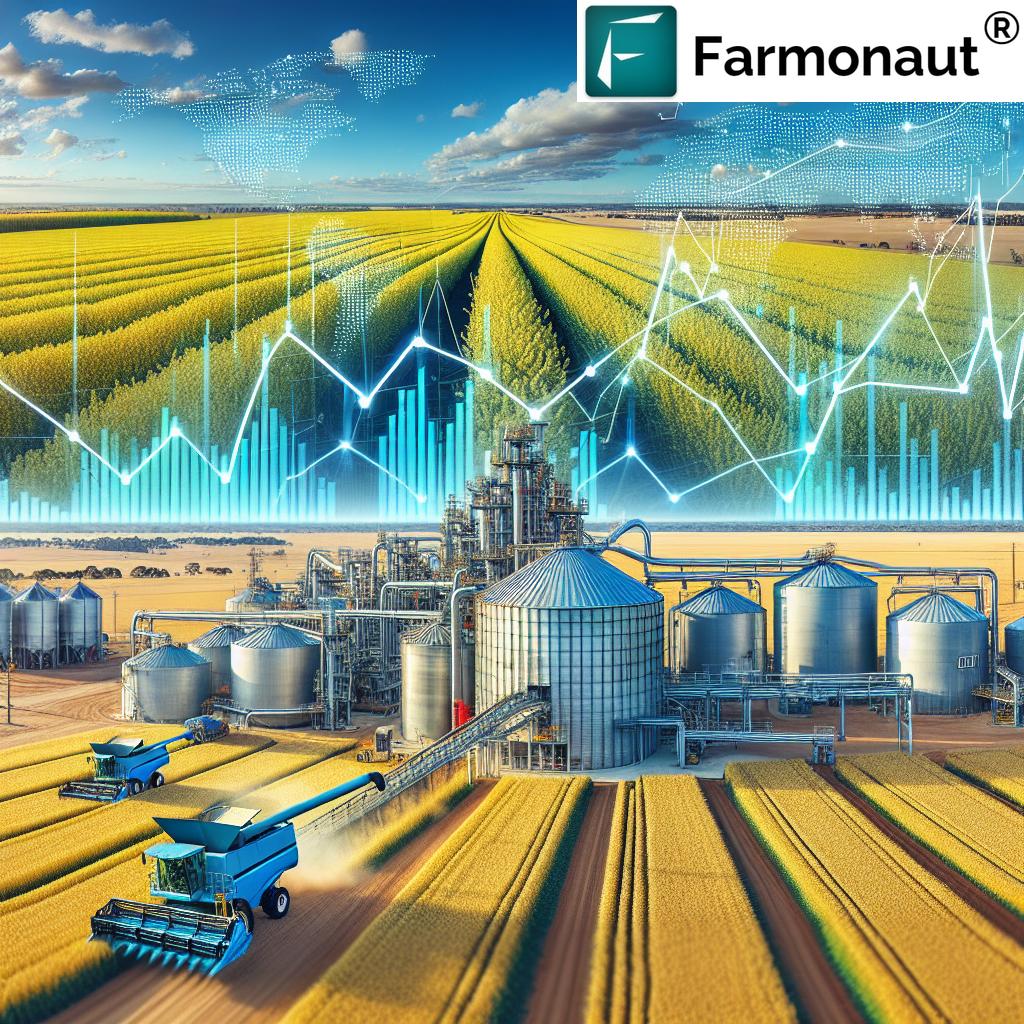BHP Australia Mining Investments 2024-2025: Copper Focus
“BHP plans to boost copper production by 10% in Australia by 2025, reinforcing its global mining leadership.”
Introduction: BHP’s Strategic Copper Focus (2024-2025)
In the ever-evolving landscape of metals and mining, BHP Australia mining investments 2024-2025 have drawn global attention for their meticulous focus on copper. As one of the world’s leading companies in the resource sector, BHP Group continuously shapes industry developments and reinforces its pivotal role in supporting global infrastructure, energy transition, and sustainable growth. This article explores how BHP’s investment strategies, operational tactics, and sustainability initiatives are redefining its trajectory—and that of the Australian mining sector—towards 2025.
Copper’s significance within the BHP group metals and mining investment profile 2025 is undeniable. As a critical metal underpinning electrification and infrastructure projects worldwide, copper investments remain central to BHP’s capital allocation. BHP is prioritizing copper due to its strong demand forecast, broad industrial applications, and its vital role in accelerating decarbonization alongside renewable energy solutions. We’ll delve into BHP’s capital outlay, its core projects, and the strategic, sustainable advances driving mining’s future in Australia.
Industry Outlook: Why Copper Remains Critical
The mining world is at the threshold of a new era, with copper emerging as the critical metal that underpins the world’s energy transition and the modernization of infrastructure systems. As we head into 2025, copper demand is expected to rise by 7% globally, propelled by investments in electric vehicles, smart grids, renewable power, and massive infrastructure upgrades across continents.
For Australia, this means that mining operations, especially those of the BHP Group, are firmly focused on expanding copper production capacity while simultaneously improving sustainability and efficiency. This transition is not just driven by market forces but also by regulatory pressures and environmental stewardship, which require companies to innovate and minimize their operational carbon footprints.
“Copper demand is set to rise 7% globally by 2025, driven by infrastructure investments and BHP’s expansion strategy.”
BHP Group Metals and Mining Investment Profile 2025
The BHP group metals and mining investment profile 2025 reflects a clear, strategic pivot towards copper. Between 2024 and 2025, BHP plans to invest approximately USD 4 billion in strengthening its Australian mining assets, modernizing existing sites, and integrating advanced digital and green technologies. This represents both continuity and evolution: while portfolio diversification continues, copper remains the top priority because of its significance for industries, technology, and global economic development.
- Capital allocation strategy aims to maximize returns by emphasizing projects with sustainable growth and high demand forecasts.
- Investment horizon: BHP’s focus extends to maximizing the productive lifespan of its world-class assets like Olympic Dam and South Flank.
- Technology integration: Major outlays are going into automation, digital monitoring, and energy-efficient processing systems.
- Environmental benchmarks: BHP is deeply committed to reducing emissions, water usage, and operational costs through innovative technologies and renewable energy deployment.
- Support for global infrastructure growth: By increasing copper production, BHP aims to be a cornerstone in construction, electrification, and renewable power sectors worldwide.
Sustainability: A Core Value of BHP’s Investment Profile
Sustainability is not an afterthought; it is embedded within BHP’s investment strategy. Enhanced focus on carbon footprints, conceptualizing greener mines, and ensuring social license to operate are now central tenets guiding every project and investment portfolio choice.
Copper Investments: Highlights of Key Projects & Strategies in Australia
Copper investments are at the forefront of BHP’s roadmap for the next two years. The company’s flagship assets in South Australia are leading examples of its determination to scale up production while embedding sustainability as a priority.
-
Olympic Dam Expansion
Located in South Australia, Olympic Dam is one of the largest underground deposits in the world, holding copper, uranium, and gold. BHP’s focus is on expanding mining and extraction capacity, optimizing processing systems, and upgrading key infrastructure. A significant capital expenditure is planned for advanced mineral processing, automation, and emission mitigation systems. -
South Flank Copper Operations
Operational since 2021, South Flank delivers some of the world’s lowest-cost production with a robust outlook through 2025. BHP continues to invest in ore sorting technology and digital monitoring for enhanced ore extraction and processing. -
Greenfield Exploration & Resource Diversification
Recognizing the need to secure future resource bases, BHP is investing in geological surveys and environmental studies to identify new copper-rich sites across Australia, ensuring continuity and growth beyond 2025. -
Integration of Renewable Energy & Electrification
BHP is integrating solar, wind, and battery-electric vehicle (EV) systems across key sites to reduce emissions, lower operational costs, and improve sustainability outcomes.
Capital, Portfolio Strategy, and Sustainability Initiatives
BHP’s capital allocation for copper expansion signifies a pivotal move: nearly USD 4 billion is earmarked for upgrades, digitalization, and direct emission reduction efforts. These investments are not just focused on increasing capacity, but also on driving down carbon intensity per ton of copper produced.
Examples of Strategic Upgrades and Innovations
- Ore Sorting Technology: Enables efficient extraction and reduces waste, helping to minimize environmental impact.
- Digital Monitoring Systems: Provide real-time insights into production efficiency, safety, and energy usage.
- Automation and Electrification: Introduction of autonomous vehicles and electrified mine fleets supports green transformation.
- Advanced Water Management: Reduces overall water usage and ensures compliance with environmental standards.
Project Development: Olympic Dam and South Flank Upgrades in Focus
Focusing on Olympic Dam and South Flank allows BHP to leverage existing infrastructure, expertise, and regulatory pathways, providing a more rapid pathway to increased copper production. Here are the highlights and strategic directions for both sites:
Olympic Dam: Global Flagship for Copper, Uranium, and Gold
- Scale and Output: Olympic Dam is home to some of the world’s largest reserves of copper, uranium, and gold—ensuring BHP remains at the forefront of global mining output.
- Technological Integration: From underground automation to advanced mineral processing plants, significant upgrades are focused on efficiency and reducing water/electricity use.
- Environmental Commitments: Clean energy and emission reduction projects are prioritized, with power being increasingly sourced from renewables.
- Resource Optimization: The company is experimenting with real-time data analytics for optimizing extraction and reducing waste, aligning with environmental and sustainability targets.
South Flank: Innovation Hub for Low-Cost Copper Production
- Productivity Focus: Enhanced ore processing, autonomous haulage, and digital integration lift both output levels and operational efficiency.
- Safety and Sustainability: New ventilation systems, automated equipment, and battery electric vehicles support a safer, cleaner site environment.
- Digital Transformation: Investment in monitoring hardware and AI-driven analytics ensures the mine stays globally competitive and sustainability-focused.
Emerging Resource Opportunities Across Australia
BHP is not just limiting its investments to established sites. Through geological modeling, environmental protocols, and digital mapping initiatives, the company is identifying new copper-rich sites to ensure supply security in the post-2025 market.
BHP’s Sustainability Approach and Environmental Strategies
A major driver of BHP Australia mining investments 2024-2025 is the intention to set benchmarks in sustainable mining. BHP’s entire investment framework for metals and mining centers around minimizing its operational and environmental footprints while maximizing broader societal benefit. Here’s how BHP aims to lead on sustainability:
Key Sustainability Pillars in Operations
- Decarbonization and Renewable Energy: Integrating solar, wind, and hybrid energy systems at mining sites. Plans for battery storage and grid resilience are also part of this push.
- Reducing Emissions Intensity: Electrification of mining vehicles and plant equipment is expected to contribute to an aggressive reduction in Scope 1 and Scope 2 emissions by 2025 and beyond.
- Improved Resource and Water Management: Innovations such as water recycling, closed-loop systems, and real-time environmental monitoring drive down consumption and pollution risks.
- Circular Economy and Waste Reduction: Extracting greater value from each tonne of ore means less waste and lower costs, supporting both environmental and economic goals.
To monitor carbon outputs for compliance and sustainability, satellite-based environmental impact monitoring is becoming an industry standard. Solutions like Farmonaut Carbon Footprinting provide real-time tracking and help mining companies meet emission targets affordably.
Technology & Innovation in Mining Operations: A New Era for Sustainability
Staying ahead in global metals and mining means embracing the latest digital technologies and operational innovations. BHP’s 2024-2025 focus is on leveraging data, automation, and advanced energy systems for optimized mining production.
- Digital Monitoring & Automation: Adoption of digital twins, drone surveillance, and AI analytics for efficient and transparent operations.
- Battery-Electric Fleets: Large-scale replacement of diesel machinery with electric vehicles & autonomous haulage for lower emissions and improved safety.
- Ore Sorting and Advanced Mineral Processing: Technology-driven upgrades that improve copper recovery rates from complex ores while reducing waste and environmental harm.
- Satellite-Based Environmental Sensing: Real-time, scalable monitoring solutions to ensure operational compliance and targeted sustainability.
For mining operators seeking to modernize their fleets and resource allocation processes, Farmonaut Fleet Management provides efficient monitoring of machinery and vehicles, reducing downtime and operational costs with satellite-driven insights.
For project traceability, improving compliance, and supply chain verification, blockchain-based solutions—such as Farmonaut Product Traceability—ensure authenticity and transparency from ore extraction to refined copper output.
Comparative Investment & Production Outlook Table
To better understand BHP’s market leadership and the evolving mining landscape in Australia, here’s a detailed, comparison-ready table showing estimated copper investments, production output, sustainability initiatives, and projected global infrastructure contributions, covering the years 2022-2025.
| Year | Company | Estimated Copper Investment (USD million) | Estimated Production Output (Tonnes) | Major Project(s) | Sustainability Initiatives | Projected Contribution to Global Infrastructure |
|---|---|---|---|---|---|---|
| 2022 | BHP | 2,100 | 850,000 | Olympic Dam, South Flank | Energy audits, initial renewable pilots | Key supplier to Asia-Pacific grid projects |
| 2022 | Rio Tinto | 1,800 | 710,000 | Kennecott, Oyu Tolgoi | Solar, wind adoption; carbon offset projects | Supply for US/China EV sectors |
| 2022 | OZ Minerals | 650 | 312,000 | Prominent Hill, Carrapateena | Water recycling, biodiversity offsets | Support for local infrastructure expansion |
| 2023 | BHP | 2,700 | 900,000 | Olympic Dam Upgrades | Fleet electrification pilots, AI monitoring | Smart grid, renewable project contributions |
| 2023 | Rio Tinto | 2,000 | 720,000 | Oyu Tolgoi (expansion) | Net-zero planning, energy integration | EV, battery and microgrid suppliers |
| 2023 | OZ Minerals | 720 | 315,000 | West Musgrave | Renewable energy development | Batteries and local grids |
| 2024 | BHP | 4,000 (Projected) | 970,000 | Olympic Dam, South Flank Expansion | Solar, wind, advanced water management, blockchain traceability | Critical supplier for global electrification |
| 2024 | Rio Tinto | 2,250 | 750,000 | Kennecott Revamp | Renewables, low-emission fleets | Global energy transition projects |
| 2024 | OZ Minerals | 750 | 320,000 | Prominent Hill Upgrade | Hybrid renewables, eco-restoration | Australia and AsiaGrid expansion |
| 2025 | BHP | 4,100 (Projected) | 1,050,000 | Olympic Dam, South Flank, Exploration | Full-scale solar & wind, EV fleets, satellite monitoring | Top contributor to global smart grids & EV supply chains |
| 2025 | Rio Tinto | 2,300 | 760,000 | Oyu Tolgoi, Kennecott Ongoing | Grid storage pilots, clean tech integration | Electrification and storage infrastructure |
| 2025 | OZ Minerals | 830 | 322,000 | West Musgrave Scale Up | Net-zero supply chain initiatives | Regional supply for global technology projects |
How Satellite Tech (Like Farmonaut) Is Transforming Mining Insight
Modern mining investments require precise, scalable data and environmental intelligence. Satellite technology platforms, such as Farmonaut, are crucial for delivering real-time, actionable insights into mining sites, infrastructure, and environmental impacts.
At Farmonaut, we leverage satellite-based monitoring with AI and blockchain solutions to revolutionize the way mining companies manage resources, monitor emissions, and achieve sustainability benchmarks.
- We provide real-time monitoring of mining assets, offering insights into extraction and processing efficiency, emissions trends, soil and vegetation health, and resource allocation.
- Our AI-powered advisory systems help mining operators optimize production, improve operational safety, and reduce environmental footprints by providing tailored, data-driven recommendations.
- With blockchain-based traceability, we support transparency and trust in metals supply chains, helping companies and regulators verify the authenticity and journey of ores from extraction to processing.
- We empower both small-scale and large-scale mining businesses with modular, scalable solutions, accessible via API, mobile, and web applications. Learn more about our API and see our Developer Documentation.
- For environmental compliance and sustainable reporting, we deliver affordable carbon footprinting solutions for mining operators across Australia and globally.
- We support mining companies in achieving cost-effective, transparent product traceability for their metals and minerals.
Interested in monitoring your mining or infrastructure investments with satellite-driven technology?
Our satellite monitoring platform also offers fleet management tools for optimizing mining logistics and reducing operational costs. Visit our Fleet Management page for more information on tracking vehicles, machinery, and resources across multiple mining and infrastructure sites.
Future Outlook: BHP’s Copper Investments and Australia’s Mining Landscape (2025 and Beyond)
As we move into 2025, the outlook for BHP’s investments in copper and broader Australian mining remains bullish. The company is executing a steadily pivoting strategy, investing heavily in both established copper projects and emerging deposits. Looking ahead:
- Production Expansion: BHP’s copper output is set to increase by around 10% by 2025, directly supporting the global supply chain for electric vehicles, grid infrastructure, and renewable energy systems.
- Technological Leadership: The continued integration of AI, digital twins, satellite monitoring, and blockchain will set new benchmarks in both efficiency and transparency.
- Sustainability Commitment: With stronger emission reduction targets, water recycling, and electrification initiatives, BHP is expected to strengthen its position as a world-class leader in sustainable mining.
- Opportunities Across Australia: Expanding exploration into new copper-rich regions is set to secure BHP’s resource base long-term and support Australia’s dominance in global metals for decades to come.
- Global Infrastructure Support: By maximizing copper production and ensuring the sustainability of operations, BHP is critically underpinning the future of smart grids, construction, and electrified transport.
Providers like Farmonaut will continue to empower Australian miners and global stakeholders with cost-effective, scalable monitoring, carbon tracking, and traceability tools.
Frequently Asked Questions (FAQ) – BHP Australia Mining Investments 2024-2025: Copper Focus
-
What is the main focus of BHP’s mining investments between 2024-2025?
BHP’s primary focus is on copper expansion in Australia. This reflects the strong global demand driven by electrification, infrastructure development, and the shift towards renewable energy systems. Significant investments are being made in expanding existing projects like Olympic Dam and South Flank, as well as exploring new resource opportunities. -
Why is copper considered critical for 2025 and beyond?
Copper is essential for renewable energy installations, electric vehicles, power infrastructure, and digital industries. Its properties make it irreplaceable in energy and data transmission. Global demand for copper is forecast to rise at least 7% by 2025. -
What sustainability initiatives is BHP employing in its Australian operations?
BHP is deploying advanced energy-efficient technologies, integrating renewable energy systems (solar, wind), electrifying its machinery, improving water management, and investing in digital and satellite-based environmental monitoring to reduce emissions and resource usage. -
How do satellite technologies support mining investments?
Satellite platforms like those from Farmonaut offer real-time monitoring of assets, environmental impact tracking, fleet management, and blockchain-based traceability—enabling data-driven decisions, compliance, and sustainability. -
What are some key projects BHP is investing in for copper production?
Olympic Dam and South Flank are the flagship sites receiving significant capital outlay for equipment upgrades, processing optimization, emission reductions, and digitalization—ensuring BHP stays at the forefront of the global copper market. -
How can mining companies leverage digital solutions for sustainability?
By integrating fleet management, carbon footprinting, and traceability solutions such as those offered by Farmonaut, mining companies can achieve better operational efficiency, comply with environmental regulations, and improve transparency in supply chains. -
Is copper production from BHP’s projects connected to global infrastructure growth?
Yes, BHP’s growing copper capacity feeds directly into the energy transition movement—supporting electric vehicle production, smart grid development, and renewable power infrastructure projects worldwide.
Conclusion: Shaping the Future of Mining in Australia and Globally
BHP Australia mining investments 2024-2025 are both a reflection of market realities and a proactive strategy to capture future growth in an electrified and sustainable world. With a renewed focus on copper, aggressive sustainability benchmarks, and technology integration at every operational level, BHP is setting new global standards for mining investments.
The company’s investments—backed by strategic site upgrades, digital transformation, and environmental leadership—put Australia at the heart of the world’s metals supply chain for decades to come. Meanwhile, satellite technology solutions, such as those from Farmonaut, are forever changing how resource management, emissions tracking, and operational efficiency are achieved in the industry.
As 2025 arrives, the outlook remains strong: BHP’s copper portfolio will be a cornerstone of tomorrow’s green infrastructure, supporting both global electrification and robust, sustainable economic development.
For those managing large mining, plantation, or forestry operations, our large-scale management app delivers scalable operations and advisory tools, leveraging satellite data and AI for real-time resource optimization.














